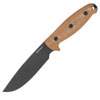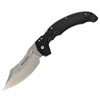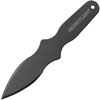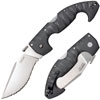|
|
|
 |
|
| WKC Dragonfly Iaito |
Points: 16

|
Stainless steel hand-forged Iaito : The Dragonfly-Iaito is a high quality iaito specially made for Training.
Hand-forged curved blade with Bohi (groove) and Chu-Kissaki tip. Stainless steel. Hamon made with sandblasting. The hardness of the Mune and of the Ha (blade edge) is 55° HRC Rockwell.
Musashi Tsuba:
JAP08BW271, JAP08BW281, JAP08BW291, JAP08BW301
Round Tsuba:
JAP08BW272, JAP08BW282, JAP08BW292, JAP08BW302
|
|
|
|
|
|
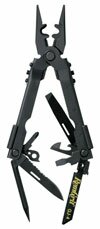 |
|
| Multitool Gerber Multi-Plier 600 D.E.T. Black (G0471) |
Points: 4
|
Gerber DET Tool. (Demolition Explosive Technician Tool). 5 1/8" closed. Black coated finish. Developed in conjunction with the U.S. military, this is the only tool certified for Explosive Ordinance Disposal units. Features needlenose pliers with blasting cap crimper, C-4 punch, wire cutter, standard/metric scale, Phillips screwdriver, can opener, large flathead screwdrivers, file, serrated blade, RemGrit saw with universal coupler and lanyard tab. All tools lock. Black ballistic cloth sheath.
|
|
|
|
|
|
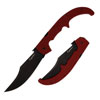 |
|
| Knife Cold Steel XL Espada G-10 Ruby Red (AUS10A) (62MGC-RRBK) |
Points: 15

|
The Cold Steel Espada was inspired by the classical Navaja knives of Spain but was utterly modern in both appearance and materials. These mega-folders took the market by storm! A design collaboration between custom knifemaker Andrew Demko and Lynn C. Thompson, the Espadas are available in two sizes to suit both the bold and the boldest of individuals!
|
|
|
|
|
|
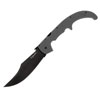 |
|
| Knife Cold Steel XL Espada G-10 Gray (AUS10A) (62MGC-GRBK) |
Points: 15

|
The Cold Steel Espada was inspired by the classical Navaja knives of Spain but was utterly modern in both appearance and materials. These mega-folders took the market by storm! A design collaboration between custom knifemaker Andrew Demko and Lynn C. Thompson, the Espadas are available in two sizes to suit both the bold and the boldest of individuals!
|
|
|
|
|
|
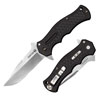 |
|
| Knife Cold Steel Crawford Model 1 Black (20MWCB) |
|
Cold Steel Crawford Model 1 is made from Japanese 4034 Stainless and is hollow ground to a thin, razor edge that will cut at the slightest touch. To keep your fingers safe from potential harm, we have equipped the Crawford 1 with our leaf spring lock, and a (patent pending) secondary safety mechanism that, when engaged is extremely resistant to shock and impact.
|
|
|
|
|
|
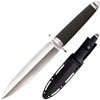 |
|
| Cold Steel Tai Pan CPM 3V Knife (13P) |
Points: 10

|
Like its serpent namesake, the Tai Pan is aggressively fast and deadly. Designed by Lynn C. Thompson in the distinctive “Tanto” style, the Tai Pan embodies all the best features of a classic dagger while minimizing its shortcomings.
|
|
|
|
|
|
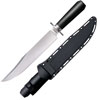 |
|
| Knife Cold Steel Laredo Bowie (4043SS) (39LME4) |
|
Awesome is the only adjective that even begins to describe the Cold Steel Laredo Bowie. In fact, it really has to be seen to be appreciated, since mere words just don't do it justice. It features a long, heavy blade made from 4034SS stainless steel, which is flat ground to produce incredible cutting power and perfect balance. And, as an added bonus, it is given an absolutely ferocious cutting edge that terminates in a dagger-sharp point.
|
|
|
|
|
|
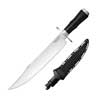 |
|
| Cold Steel Natchez Bowie (4034SS) (39LMB4) |
Points: 20
|
"Under-The Hill" was the notoriously rowdy riverfront district of Natchez, Mississippi at the beginning of the nineteenth century. So disreputable, it was seldom mentioned in the polite drawing rooms of the antebellum mansions that dotted the other side of town during the era when cotton was king.
Our Natchez Bowie was born "Under-The-Hill" and takes its pedigree from those seedy taverns and dimly lit streets. Line-bred for battle, it's the definitive fighting Bowie. Its long blade is perfectly shaped for strength, reach and leverage, and its significant heft is flawlessly balanced, giving it unparalleled liveliness and velocity. Combine all that with its wickedly razor sharp edge and you have a knife that pierces like a dagger, cuts like a razor and chops like a cleaver! Blade is made of 4034 stainless steel. Micarta handle, includes SecureEx sheath.
|
|
|
|
|
|
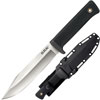 |
|
| Knife Cold Steel SRK (CPM 3V) (38CKE) |
Points: 10
|
Cold Steel 3V SRK knife. Survival & Rescue operations demand a versatile knife able to withstand the most extreme conditions. Simply put, the Cold Steel SRK (Survival Rescue Knife) was designed specifically with this in mind. A popular knife with Military and Tactical Law Enforcement Personnel, the SRK is the standard issue knife of the Navy SEALS for their BUDS - or Basic Underwater Demolition training - the SRK has proved its worth time and time again in the most demanding environments. Whatever the mission, we’re confident that the SRK is the knife for you!
|
|
|
|
|
|
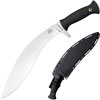 |
|
| Cold Steel Gurkha Kukri Plus (CPM 3V) (35GKP) |
Points: 20
|
The Gurkha Kukri Plus’ CPM-3V tool steel blade will out-chop any factory or handmade knives; including swords twice its size, even expensive, hand-forged Japanese Katanas. It’s the heaviest Kukri on the market. The blade is almost an inch wider near the tip than at the handle, shifting the knife’s balance point forward to allow a substantial blow to be struck with minimal effort, using inertia alone to complete the cut.
|
|
|
|
|
|
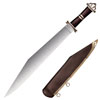 |
|
| Viking Sword Sax Blade Knife (88HVA) |
Points: 10
|
If you've got warrior blood in your veins, then we have two weapons youre bound to love. The Damascus Viking Sword and its companion, Long Sax are hand forged from our finest Damascus steel and come fully sharpened and ready for battle.
|
|
|
|
|
|
|
|
Tags:
swords, sword, katana, wakizashi, tanto, japanese sword, medieval sword, viking sword, japanese swords, medieval swords, viking swords, knife, knives, saber, armour, movie swords, movie replicas, martial arts, sporting goods, sporting equipment,
|


